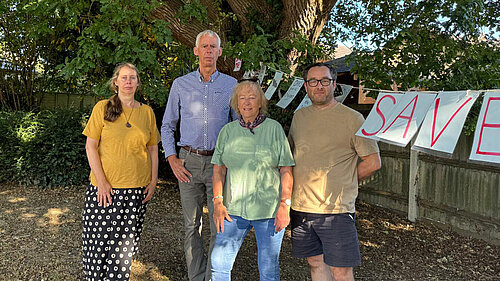Horsham's Man in Westminster: Why are we cutting down so many ancient trees?

By John Milne MP to be printed in the Thursday, 21 August 2025, print edition of the West Sussex County Times.
Today more than ever we value the beauty and environmental benefit of mature trees, as they are home to an amazing variety of wildlife. It’s an emotional thing – we see our favourite local trees almost as old friends.
Ever since 1947, it’s been possible to give threatened trees legal protection with a TPO (Tree Protection Order). Yet across the country, we’re now seeing thousands of TPOs being set aside, in direct contradiction of the government’s own ambitious tree planting targets.
Residents of Billingshurst are currently campaigning to save two mature oak trees, deemed to be potentially responsible for subsidence in a nearby house extension. Pending a final decision at the Parish Council, a pair of magnificent, 200 year old trees will therefore be felled in mid September.
This is not an isolated incident. Residents of Cowfold are still fighting to save a 100 year oak which is also at risk. Elsewhere in the country, hundreds of similar cases in Fareham, Hampshire, have led the council leader to write to Secretary of State, Angela Rayner, to ask for a change in law.
What’s driving this? In both cases, the pressure comes from insurance companies. It’s been known for many years that tree roots can cause subsidence in nearby buildings because they take up water from the soil, causing movement. As you would expect, this is especially likely during dry spells, which have become more frequent in recent years.
Every case has its own unique circumstances. But what we’re seeing here is that tree felling has become the default response ‘on the balance of probability’, as the legal phrase goes. It’s not necessary for insurers to prove a causal link. The tree is guilty until proven innocent, as it were.
I understand why local councils find it difficult to resist felling applications. If they do so, they make themselves financially responsible for the consequences, which can amount to tens of thousands of pounds. All sides – homeowners, councils and insurers – are getting caught in a legal trap.
Across the country, we are losing literally thousands of wonderful mature trees as an unintended consequence of insurance risk management. I hope the Secretary of State will issue guidance to help end this ’shoot first, ask questions later’ approach to national tree management.